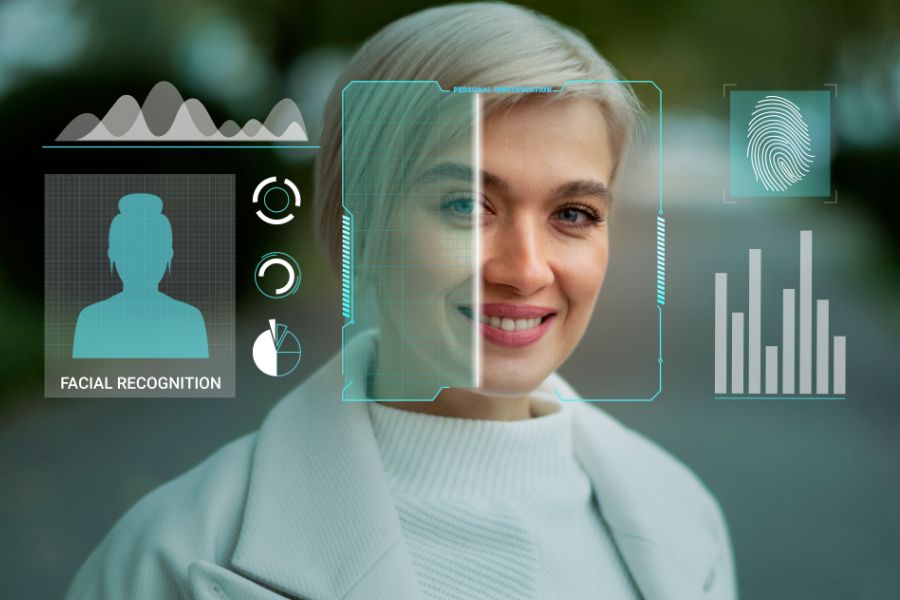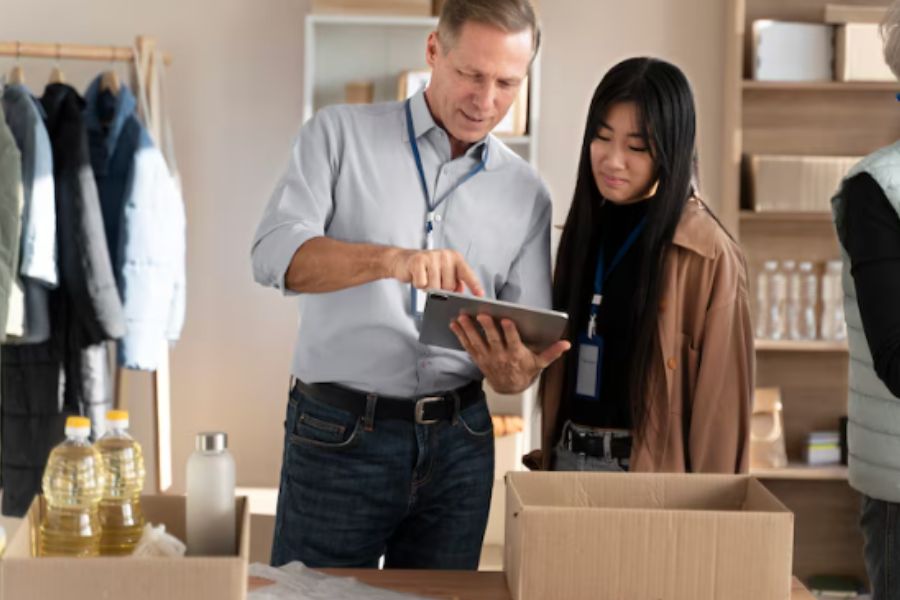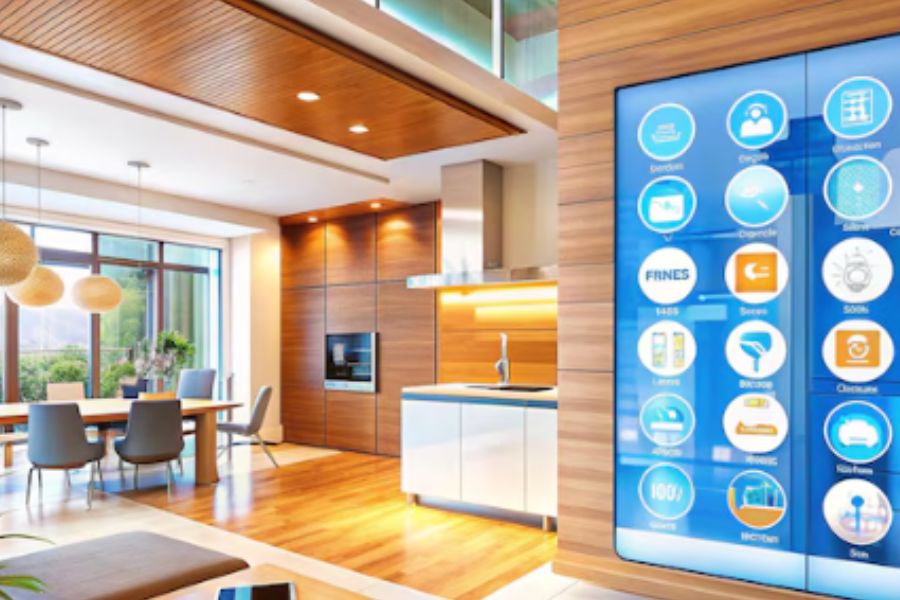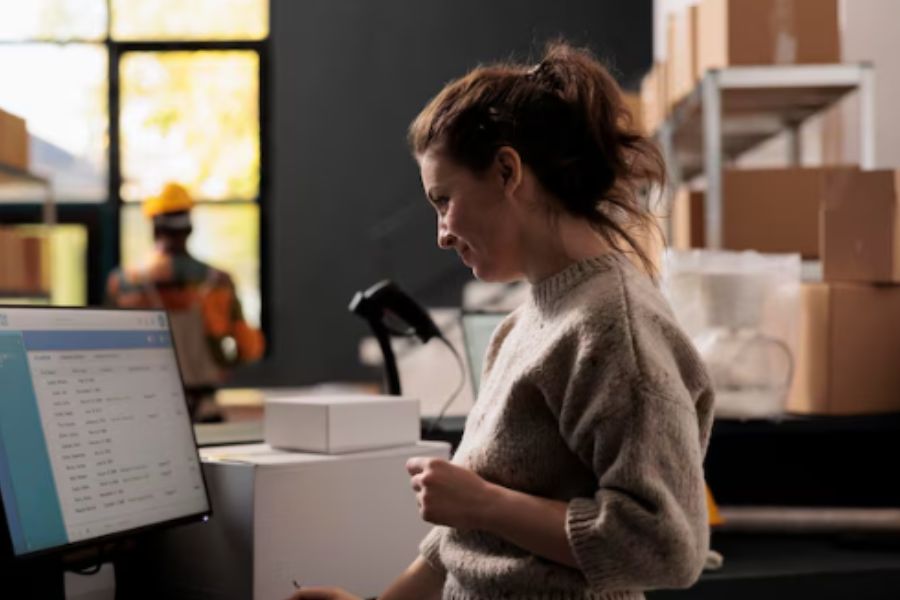Facial recognition technology is revolutionizing the retail industry, offering advanced security measures, improved operational efficiency, and personalized customer experiences. By analyzing facial features, retailers can identify individuals, prevent theft, enhance customer engagement, and optimize store management.
In this article, we explore what facial recognition is used for in retail stores, highlighting its benefits, ethical considerations, and future trends to help you understand its impact on your business.
What is Facial Recognition, and How Does It Work?
What is facial recognition? What is facial recognition used for? How does it work? Perhaps, these are the questions that many people are wondering when would like to learn more about facial recognition. No worries, we will help you learn as well as understand about this system.
A facial recognition system represents a sophisticated method for verifying or confirming someone’s identity through the utilization of an algorithm that processes digital images or video frames. This system identifies distinctive facial features in an image and compares them to faces already stored in a database. Its popularity is on the rise, driven by continuous developments that introduce new applications. As digital images and video stills become clearer, the ability to discern distinct individuals and faces improves. Simultaneously, matching software and algorithms benefit from expanded data sources, enhancing accuracy.
The integration of facial recognition and data has become increasingly essential in commercial identification, playing a pivotal role in targeting individuals and tailoring sales and marketing messages.
Moreover, facial recognition finds growing applications in automatic image indexing, interactions between humans and technology, and the implementation of video surveillance systems. Ongoing technological advancements ensure that the facial recognition landscape undergoes continuous enhancements, resulting in significant upgrades to its capabilities.
Here’s a basic overview of how facial recognition works:
- Face detection: The process starts with face detection, where the software identifies and locates faces in an image or video stream. This step involves detecting the presence and location of a face within the overall frame.
- Feature extraction: Once the face is detected, the system extracts key facial features such as the distance between the eyes, the shape of the nose, the width of the lips, and other distinctive characteristics. These features create a facial template or a unique representation of an individual’s face.
- Face database comparison: The extracted facial template is then compared with a database of known faces. This database may contain images of individuals who have been pre-registered or enrolled in the system.
- Matching and recognition: The facial recognition algorithm compares the extracted features with the features stored in the database. If there is a match, the system recognizes the person. This recognition can be used for various purposes, including access control, surveillance, and authentication.
- Privacy concerns: Facial recognition technology has raised privacy concerns because of its potential for widespread surveillance. Critics argue that the use of facial recognition in public spaces could lead to the tracking of individuals without their knowledge or consent.
Benefits of Facial Recognition When Used in Retail Stores
Facial recognition technology offers numerous advantages in retail settings, enhancing security, streamlining operations, and personalizing customer experiences.
Stopping stealing and other crimes related to retail
One of the primary concerns for retailers is preventing theft and crimes. Traditional security measures have limitations, but facial recognition technology introduces a new level of security. By leveraging advanced algorithms and real-time analysis, it identifies and tracks potential shoplifters and individuals involved in criminal activities.
For instance, if a known shoplifter enters a store, the facial recognition system immediately detects their presence and triggers an alert for store security. This proactive approach allows for timely intervention, preventing theft before it occurs. The deterrent effect is substantial, as potential wrongdoers are aware of the increased risk of getting caught in stores equipped with this technology.
Multi-store management
Managing consistency across multiple retail locations can be challenging. Facial recognition technology simplifies multi-store management by enabling centralized systems that ensure uniform security measures, customer experience standards, and data analysis methodologies across all stores.
This interconnected approach streamlines operations and allows for efficient data collection and analysis. Retailers gain insights into customer behavior, preferences, and trends on a broader scale, facilitating informed decision-making at both individual store and chain-wide levels.
CRM integration
Customer Relationship Management (CRM) systems are vital for personalized customer experiences. Facial recognition technology enhances CRM integration by associating customer faces with their purchase history, preferences, and other relevant data.
For example, when a loyal customer walks into a store, the facial recognition system identifies them instantly and provides store associates with detailed information, such as past purchases, preferred brands, and sizes. Armed with this knowledge, the associate can offer personalized recommendations, creating a unique and memorable shopping experience.
Clienteling
Clienteling involves providing personalized service to customers, and facial recognition technology significantly enhances this practice. It enables store associates to quickly recognize and assist loyal customers based on their facial features.
For instance, when a returning customer enters the store, the facial recognition system alerts the associate, reminding them of the customer’s name, preferences, and past interactions. This seamless recall of information allows the associate to continue the conversation from where it left off, providing a sense of continuity and personalized service.
VIP & loyalty program
VIP and loyalty programs are crucial for cultivating a loyal customer base. Facial recognition adds sophistication to these programs by automating the identification of VIP or loyal customers as they enter the store.
When VIP customers walk in, the facial recognition system recognizes them immediately and triggers a personalized greeting. They are acknowledged by name and presented with exclusive offers, tailored promotions, and heightened attention. This instant recognition and special treatment contribute to a more engaging and rewarding shopping experience for valued customers.

Technological Challenges of Using Facial Recognition In Store
While facial recognition technology offers significant benefits to retail stores, it also comes with several technological challenges that must be addressed to ensure successful implementation and operation.
Implementation Costs
Implementing facial recognition technology involves significant upfront costs. Retailers need to invest in high-quality cameras, sophisticated software, and robust hardware to support the system. Additionally, the integration of facial recognition with existing infrastructure can require substantial financial and technical resources.
Retailers must carefully consider these costs and develop a budget plan that balances investment with expected returns.
Integration Complexity
Integrating facial recognition technology with existing systems, such as point-of-sale (POS) systems, customer relationship management (CRM) platforms, and security infrastructure, can be complex. Ensuring seamless communication between these systems requires advanced technical expertise and thorough planning.
Retailers may need to work closely with technology providers and consultants to ensure a smooth integration process.
Accuracy Issues
Facial recognition technology relies on the accuracy of its algorithms to correctly identify individuals. Factors such as lighting conditions, camera angles, and changes in a person’s appearance (e.g., due to aging, makeup, or accessories) can affect accuracy.
Retailers need to invest in high-quality systems that can perform well under various conditions and continuously update their databases to maintain accuracy.
Data Privacy and Security
Storing and handling biometric data raises significant privacy and security concerns. Retailers must ensure that customer data is stored securely and used ethically, complying with regulations such as the General Data Protection Regulation (GDPR) and the California Consumer Privacy Act (CCPA).
Implementing robust data encryption, access controls, and regular security audits can help mitigate these concerns and build customer trust.
Customer Acceptance
The acceptance of facial recognition technology by customers is crucial for its success. Some customers may have concerns about privacy and data usage, leading to resistance. Retailers must be transparent about how the technology works, what data is collected, and how it is used.
Educating customers and obtaining their consent can help alleviate concerns and foster acceptance.
ConnectPOS is a next-generation point-of-sale (POS) system that integrates the latest modern technologies, transforming retail operations. It can be customized to connect with cutting-edge facial recognition software for secure and seamless transactions, AI-powered analytics for insightful decision-making, and self-service options to enhance customer convenience. Additionally, its mobile POS capabilities ensure flexibility and efficiency, allowing staff to assist customers anywhere in the store. With ConnectPOS, retailers can streamline processes, improve customer experiences, and stay ahead in the competitive retail landscape.
Conclusion
In conclusion, facial recognition technology is revolutionizing the retail industry by enhancing security, streamlining operations, and personalizing customer experiences. Understanding what facial recognition is used for—from preventing theft and managing multi-store operations to integrating with payment systems and CRM—helps retailers harness its full potential. By adopting this technology in POS, retailers can achieve greater efficiency, improved customer satisfaction, and a competitive edge in the market.
For a cutting-edge solution that leverages facial recognition and other advanced technologies to transform your retail operations, contact ConnectPOS today.



